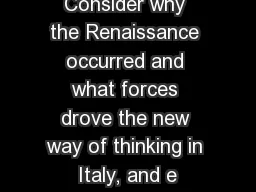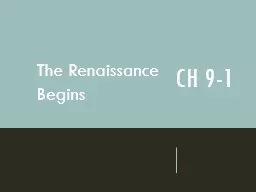PPT-Italian Renaissance
Author : lois-ondreau | Published Date : 2019-12-05
Italian Renaissance Lesson 5Italian Reniassance Agenda Bellwork Italian Renaissance Notes Exit Ticket The Prince Literary Analysis Bellwork Begin a new section
Presentation Embed Code
Download Presentation
Download Presentation The PPT/PDF document "Italian Renaissance" is the property of its rightful owner. Permission is granted to download and print the materials on this website for personal, non-commercial use only, and to display it on your personal computer provided you do not modify the materials and that you retain all copyright notices contained in the materials. By downloading content from our website, you accept the terms of this agreement.
Italian Renaissance: Transcript
Italian Renaissance Lesson 5Italian Reniassance Agenda Bellwork Italian Renaissance Notes Exit Ticket The Prince Literary Analysis Bellwork Begin a new section of notes titled Italian Renaissance Copy the following key terms then answer the questions below. in history. Latin remained the language of the educated.. The nobility remained in a prominent position.. Medieval Legacy. The jury system is still used in most countries.. in modern times. Medieval Legacy. Outcome: Renaissance Writers. What qualities do people look for in a leader?. What leadership qualities are good for a country?. In terms of running a country, can the end justify the means?. Renaissance Writers. -Key Concepts-. Terms to Know. Renaissance. Humanism. Secular. Patron. Perspective. Vernacular. Indulgences. William Shakespeare. Heliocentric. The Printing Press. Machiavelli. Isaac Newton. Renaissance Man. Dr. Lou Mills – Sept 2015. Country Estates and Retreats. Chronology. The Castle morphs into the Cloistered Gardens- 11. th. Century. Crusades 11. th. -14. th. Century. First Universities 1088- University of Bologna. The term “Renaissance” was first applied to the period following the Middle Ages by Giorgio Vasari. . The term means “rebirth” and refers to the rebirth of learning (in particular the learning from the Greco-Roman world) and secularism (mostly in the form of humanism).. NORTHERN. ITALIAN. Comparing the styles…. Realism through mathematics and linear perspective. Intentional references to Classical Architecture and figure studies. Linear Perspective. Great art in the form of Frescoes and larger Temperas. Rebirth of art and learning. Began in northern Italy. Economic Foundations. Increased demand for Middle Eastern products. Encouraged the use of credit and banking. Letters of credit expanded supply of money and sped up trade.. . Lesson 1 . The Italian Renaissance . Learning Objectives. Describe the characteristics of the Renaissance and understand why it began in Italy.. Identify Renaissance artists and explain how new ideas affected the arts of the period.. 17 March 2010. Outline. End of the Medieval Era. Plague. Learning. Social Order and Cultural Change. Household. Women. Trade. Vernacular Literature. Humanism. Petrarch. Print. Civic Humanism. The Origins of the Renaissance. Contributions. Effects of the Renaissance. Cornell note-taking method. Notes color-coded in . RED. go on this side of the line.. These items will include:. Main Ideas. Big Concepts. Vocabulary Words. Why did the Renaissance start in Italy?. Europeans still looked to Rome for cultural and intellectual guidance. Italian merchants prospered even during the Middle Ages; these merchants valued education and flaunted wealth through art. Note: All other images are from Microsoft clip art. Why It’s Important. humanism- belief in the importance of people. Renaissance- . French word meaning “rebirth”. people . became interested in the world around them. Increased Trade with Asia and other regions. Growth of large, wealthy city-states in Italy. Renewed Interest in the classical learning of ancient Greece and Rome. Rise of rich and powerful merchants, who became patrons of the arts. Bellwork. : Friday. 1. What country in Europe was at the heart of Renaissance advancements?. 2. What was the Renaissance a 'REBIRTH' of?. *Make sure your NAME is on your . bellringer. *. Success Criteria.
Download Document
Here is the link to download the presentation.
"Italian Renaissance"The content belongs to its owner. You may download and print it for personal use, without modification, and keep all copyright notices. By downloading, you agree to these terms.
Related Documents

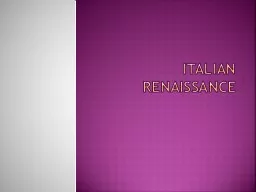
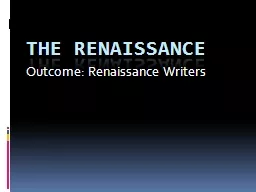
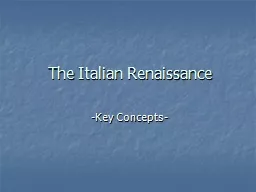
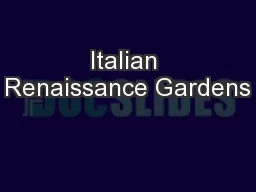
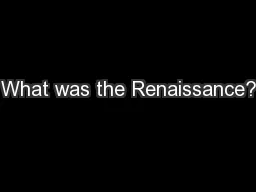
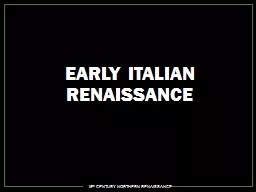
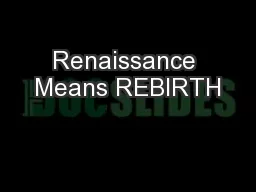
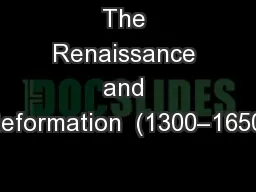
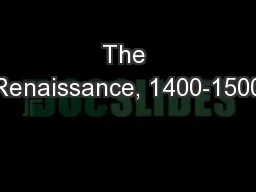
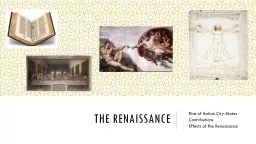
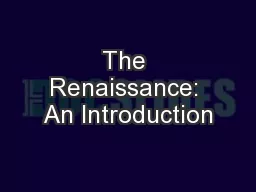
![Renaissance Italy http://www.kmkz.com/jonesj/gallery/renaissance italy[1].jpg](https://thumbs.docslides.com/717618/renaissance-italy-http-www-kmkz-com-jonesj-gallery-renaissance-italy-1-jpg.jpg)
